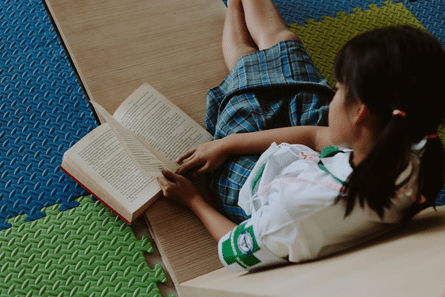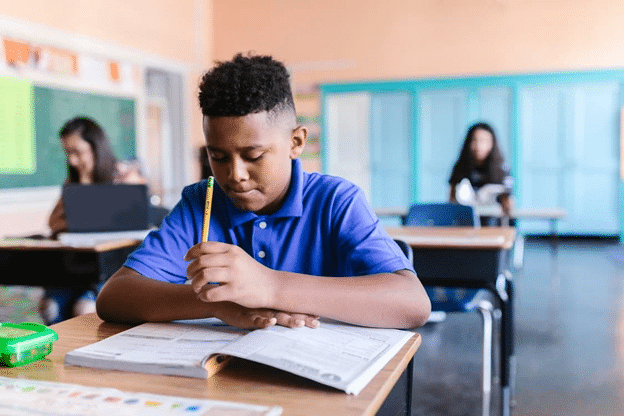Fast Phonics Games for Kids to Boost Their Reading Skills
Reading can be a difficult skill to master. From decoding new words to decoding passages, reading requires a lot of practice. Fortunately, there are games that can help kids practice their reading skills and build their confidence. These games range from reading comprehension games to phonics games that focus on reading fluency.
For kids who are having a hard time reading, playing these games can be a fun way to practice their skills and improve their reading comprehension. Here is a list of the best fast phonics games for kids to help them practice their reading and boost their confidence.
Sight Words Scramble
Sight words are the building blocks of reading. This fun sight words scramble game helps kids to practice recognizing and reading words in sequence. The first player to guessed all of the sight words in the scrambled sentences wins.
Kids will love this word scramble game because it’s fast-paced and engaging. If your child is having a difficult time with reading, this game can also be helpful in building their confidence as they try to tackle more advanced reading skills. In each turn of the game, one player reads a scrambled sentence. The other players try to guess the words. If a player gets a word correct, they can steal a letter from the word on the board and replace it with one of their own. If the word is guessed incorrectly, the player with the word can take a letter from the word on the board and replace it with one of their own.
Phonics Bingo
Bingo is a fun game that can be used for many different purposes. In this phonics bingo game, kids will practice recognizing and placing specific sounds in syllables. This bingo game is best for kids who are just learning how to read or are having a hard time with sounding out words. To play, each card has a picture of a different animal on it. In each column of the card, there are various sounds that the animal makes. The goal is to mark off the spaces on the bingo card that have the sounds that the animal makes. As players mark off cards, they will earn points. The player with the most points at the end of the game wins.
Reading Comprehension Games
Reading comprehension games are perfect for kids who are having a hard time understanding what they read. These games help improve a kid’s ability to comprehend what they read by using visual and auditory cues. These games can also be used to help kids stay focused when reading.
Here are a few examples of reading comprehension games:
Color-Word Games
These games will help your child stay focused while reading. The goal of these games is for the child to find the specific color that is mentioned in the word. To play, have the child read the word out loud. Then, have them draw a picture of the word. After the picture is complete, have them name the color that was mentioned in the word. Once the color is named, have them find the corresponding card and place it in the correct pile.
Phonics Games
These games will help your child practice their reading skills while having fun. There are many different types of phonics games out there, so it can be hard to know which ones to use. To help your child get started, here are a few basic phonics games that you can start with:
Find the Sound in This: This is a great early literacy game for kids. It helps build a child’s confidence as they practice recognizing letters and sounds.
Blind Man’s Bluff: In this game, one player is the “Bluffers,” and the other players are the “Bluffees.” The Bluffers start by saying a word out loud, and then the Bluffees have to guess what the word is using only their ears. This is another great game for building confidence.
Matching Game: This game is great for developing a child’s visual memory.
Word Searcher: This is a “find that” literacy game. It can help with reading comprehension by verbally requesting that a child find a specific word in a book.
Mosaic: This is a great game for developing a child’s concentration and patience.
Phonics Games
These games will help your child build their confidence while improving their reading skills.
Guess the Word: This is a fun game where the objective is for the first person to guess the word to win. The player will say the first word that comes to mind when they hear the word that is being guessed. This can be a difficult game to play if words are a challenge for your child, but it is a great way to build confidence as they try to tackle more difficult reading situations.
Word Wall: This game is similar to pin the tail on the donkey. The only difference is that in this game your child will be placing words on a word wall. This is a great way to practice reading comprehension and also build confidence by achieving success.
Fluency Games
These games will help your child practice reading out loud and sounding out words.
Story Telling. This is a great way to build confidence while having fun. Have your child practice telling you stories while you try to be the audience. This is also a good way to work on your child’s storytelling skills.
Listen and Spell: In this game, you will be competing against your own voice. You will read a word out loud and then your job is to try and spell the word that you just read as fast as you can. This game is best played with a friend or two. Try listening to different speeds and tone of voices to practice reading out loud and sounding out words.
Reading Races: This is another fun way to practice sounding out words. The game is based on a “reading race,” and the last player who can’t pronounce the word loses. This is another good way to work on your child’s patience and they will learn to love losing.
Summing Up
Reading is a fundamental part of a child’s education, and it can be a difficult skill to master. Fortunately, there are many games that can help kids practice their reading and build their confidence. In this article you’ve been provided with a list of the best fast phonics games for kids to help them practice their reading and build their confidence.
Start Teaching Reading for Free Now!
Access Level 1’s four interactive stories and the accompanying supplemental resources to teach elementary students how to read. No credit card is needed. Join the 42,635 teachers and students using our reading program.






 The importance of teaching phonics to children is often overlooked, but it is very important as it helps them learn to read. By teaching them phonics, kids will learn how to pronounce, sound out, and blend the sounds of language. This will let them read out loud in public and spell out new words on their own.
The importance of teaching phonics to children is often overlooked, but it is very important as it helps them learn to read. By teaching them phonics, kids will learn how to pronounce, sound out, and blend the sounds of language. This will let them read out loud in public and spell out new words on their own.














 Reading is a difficult task for many children. In fact, according to the National Center for Educational Statistics, one-third of fourth-graders are not reading on grade level. As parents, it can be hard to come up with fun ways to encourage your child to read more and improve their reading skills. The good news? There are plenty of literacy games that engage kids and make reading enjoyable!
Reading is a difficult task for many children. In fact, according to the National Center for Educational Statistics, one-third of fourth-graders are not reading on grade level. As parents, it can be hard to come up with fun ways to encourage your child to read more and improve their reading skills. The good news? There are plenty of literacy games that engage kids and make reading enjoyable!